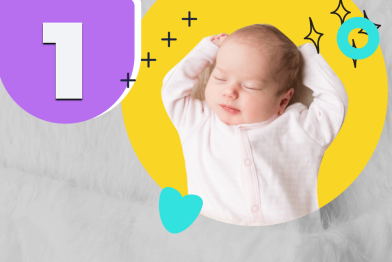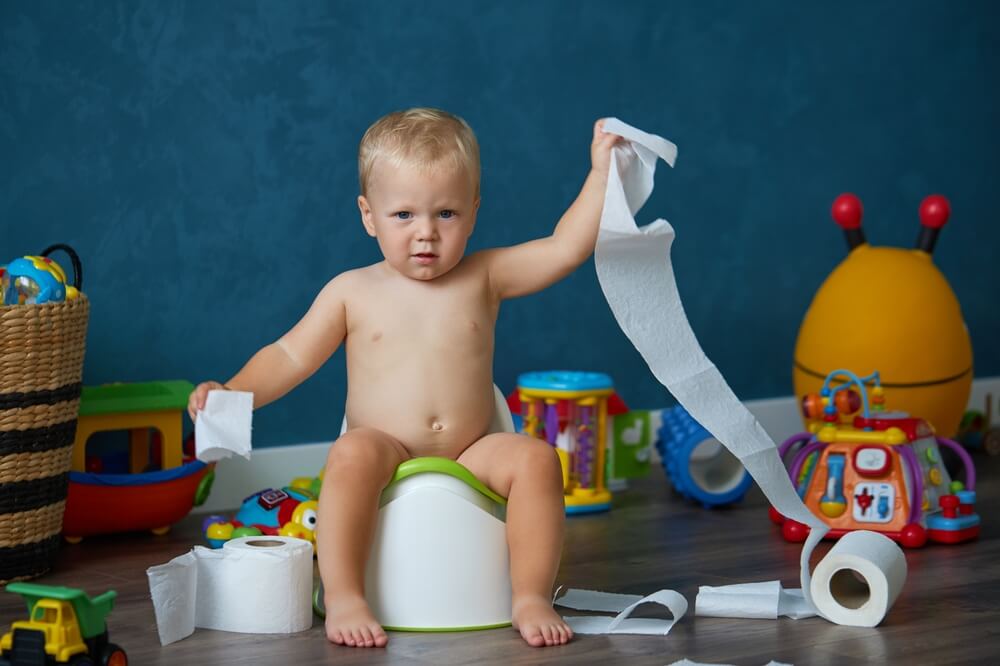Tiny Steps, Giant Leaps: The Development Journey of Your 3-Year-Old

Welcome to the magical time when your toddler leaves behind the “terrible twos” and joins the world as a 3-year-old. In this important phase of your child’s development, the 3-year-old milestones will include: learning to make friends, dealing with big feelings, and coming to terms with the world around them.
Contents:
- How Much Will My 3-Year-Old Child Grow?
- What Most Children Do at This Age
- Developmental Checklist
- Sleeping and Feeding
- Helping Child Development at 3–4 Years
- Developmental Delays in 3-Year-Olds
- FAQ
How Much Will My 3-Year-Old Child Grow?

MIA Studio/Shutterstock.com
One of the things you might have noticed as your child approached 3 is that their growth slowed down. Don’t worry, this is completely normal for this milestone. Most 3-year-old boys and girls only grow between 2 to 3 inches in height during this developmental stage. You might also have noticed that your little ones have started to lose their “baby weight”.
The child will begin to look slimmer, and taller and start to gain more muscle. This is because they have become more inquisitive of the world around them. During this phase of your child’s development, you can expect them to gain very little weight. The average child of this age may only gain anywhere from 4 to 6 pounds more than they used to weigh.
It is around this time that you might notice your child’s facial features change. Their features will mature and they will become more distinct. An important development physically for your child at this age is an increase in the length of his or her skull and a more pronounced lower jawline. The upper jaw of your 3-year-old will also widen as they begin to develop their permanent teeth.
What Most Children Do at This Age
There are several important development milestones for your 3-year-old child which indicate that they are on the right path in their developmental growth.
Movement/Physical Development Milestones
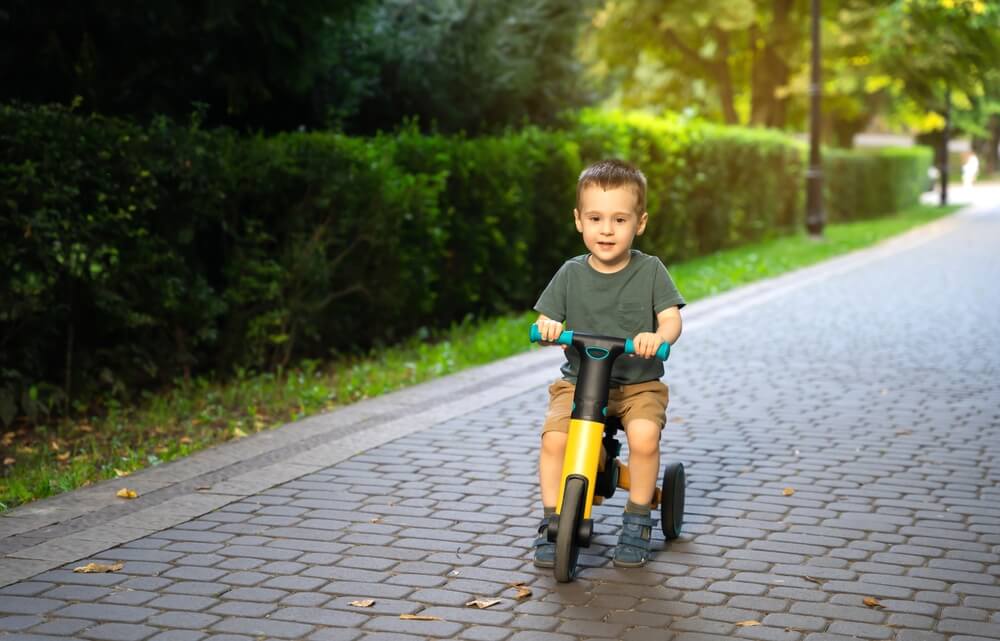
Andrii Yalanskyi/Shutterstock.com
At 3 years old your child is filled with energy. They are discovering an exciting world around them and they are learning to use their tiny bodies in many new ways.
The development milestones for your 3-year-old child include:
- Being able to stand on one leg for 5 seconds and hop around
- Navigate up and down stairs without help or support
- Can kick and throw a ball
- Able to catch a bounced ball
- Pedaling a tricycle
- Climbing on and off a chair or couch
- Self-feeding with a spoon
- Able to dress themselves
- Washing and drying their hands
Motor Skills
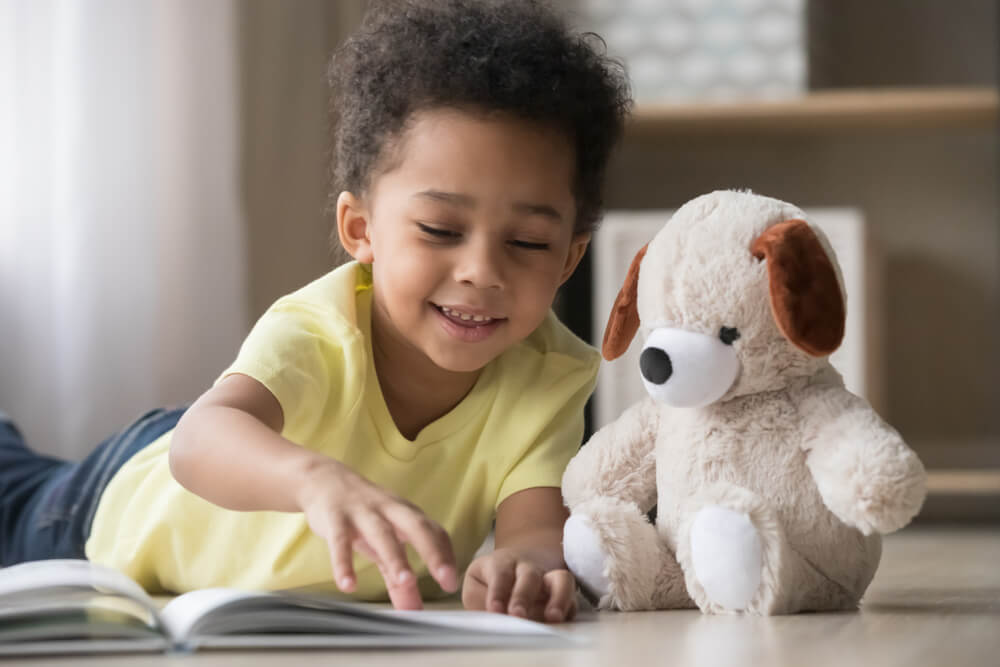
fizkes/Shutterstock.com
Your child is learning to focus their energy and you’ll see better control of their motor skills.
For this milestone, your child should be able to handle smaller objects and turn pages of books by themselves. Your little one will be able to draw squares and even circles. As your child navigates through this new phase they will also be able to build a four or more block tower, turn door handles, and open lightly tightened jars.
Milestone motor skills are an important part of your child’s development at 3 years old. Mastering their motor skills allows your child a greater level of independence and an even greater opportunity to express their creativity. Always remember to let your child develop at their own pace.
Cognitive Milestones
As the development milestones for your 3-year-old child are ticked off they will also begin to develop better cognitive skills and achieve better academically. This is the phase where you will find yourself answering thousands of questions every day. Why? How? What? These are all important questions your child will ask while they learn more about the world around them.
All those questions, no matter how frustrating, are part of a crucial learning process for your child. A simple tip for answering these thousands of questions is to keep your answers as simple as possible. Your child will lose interest if your answers are too drawn out.
Language/Communication Milestones
Just a year ago your little one was piecing together words and learning to talk. Now, their language skills are astonishing. Your 3-year-old’s vocabulary includes more than 300 words and although it feels like they’re using all of those words every day, this milestone is invaluable to them.
Your child’s language at 3 can include sound imitation and reciting words they hear from adults as well as stringing together full sentences. As children practice their language skills they become better at word pronunciation and word usage. Other language milestones include your child’s understanding of concepts such as different and same.
As your child develops their speaking skills they will begin to tell stories and speak more clearly. They will also be able to answer simple questions and know their name and age. As curiosity for the world around them grows your child will also begin to ask even more questions.
Social/Emotional Milestones

everst/Shutterstock.com
You will have noticed that at this age your child is more socially aware and emotionally independent. At this age, your child is learning important life skills such as making new friends, learning to share, and solving problems. Your child’s creativity has also been thrust into overdrive.
As your child gains their confidence at this milestone they will begin to become more self-aware. They will want to share toys and socialize with other children and this will teach them that not everyone thinks the same as they do. It is also when they learn the concept of ideas and opinions.
Your 3-year-old will also begin to pursue new experiences as well as engage in active fantasy play. You will begin to notice your child assign roles to themselves or others when playing much as mom, dad, or a superhero. These emerging social skills will help your child as they navigate the preschool world.
As your little one embarks on the exciting journey of reaching those 3-year-old milestones, ensure their safety and your peace of mind with the Findmykids app. With real-time location tracking and smart alerts, it’s the perfect companion for parents navigating the joys of their child’s development. Download the app today and enjoy the journey with confidence!
Developmental Checklist

Juliya Shangarey/Shutterstock.com
This developmental checklist for 3-year-olds provides a comprehensive overview, ensuring parents are well-informed and supportive during this exciting phase of their child’s life.
Movement Development/Motor Skills:
- Improved Coordination: Notice enhanced control over movements and gestures.
- Climbing Skills: Ability to climb stairs with assistance and explore the environment.
- Jumping: Developing the skill of jumping with both feet off the ground.
- Throwing and Catching: Learning to throw and catch a ball with increasing accuracy.
- Pedaling a Tricycle: Developing the ability to pedal a tricycle.
- Balance: Demonstrating improved balance, walking, and running more confidently.
- Engaging in activities that refine hand-eye coordination, such as drawing and building.
- Demonstrating the capability to manipulate and fit together simple puzzles.
- Engaging in activities that enhance gross motor skills, like hopping and galloping.
- Mastering the use of utensils for eating and self-feeding.
- Building towers with blocks, showcasing improved precision and control.
- Attempting to dress and undress independently, fostering self-help skills.
- Exploring pouring and scooping activities to enhance hand control.
Cognitive Milestones:
- Curiosity and Imagination: Displaying signs of curiosity and engaging in imaginative play.
- Expanding Vocabulary: Rapidly growing vocabulary with the ability to express ideas and needs.
- Participating in storytelling and role-playing activities to enhance creativity.
- Introduction to basic academic concepts like numbers, colors, and shapes through playful activities.
Language/Communication Milestones:
- Achieving clearer pronunciation of words.
- Developing more structured sentences.
- Ability to understand and follow straightforward instructions.
- Continuous growth in vocabulary and language comprehension.
- Encouraging language development through everyday conversations and reading.
Social/Emotional Milestones:
- Learning to express a range of emotions and understanding others’ feelings.
- Encouraging positive interactions with peers.
- Introducing basic manners and social etiquette.
- Observing and nurturing the growing sense of independence.
- Fostering empathy and understanding towards others.
Sleeping and Feeding
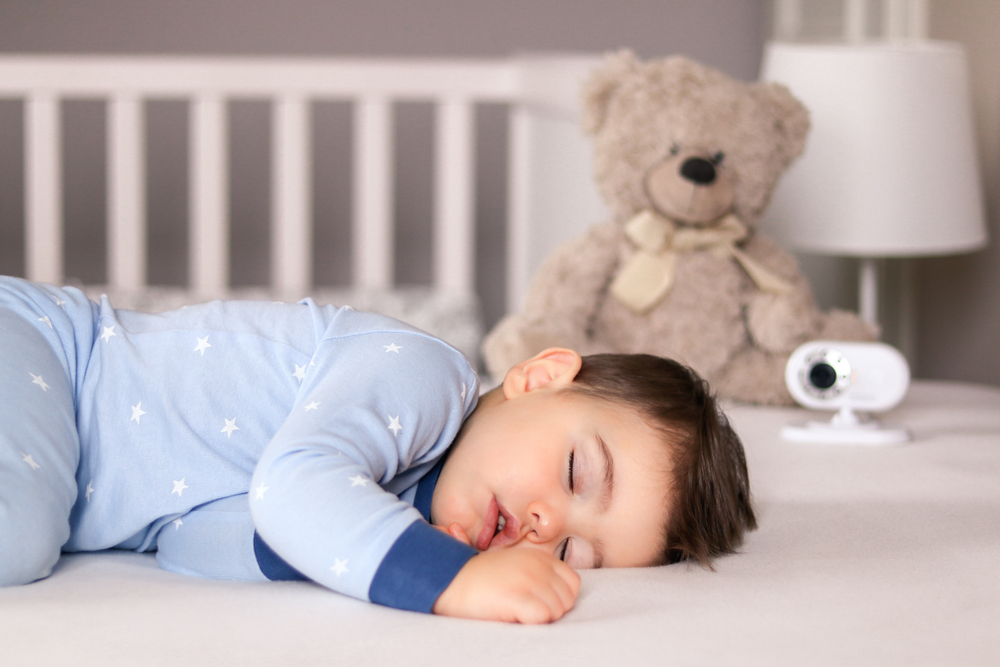
Tatyana Soares/Shutterstock.com
Your child’s development is greatly supported through a healthy diet and regular sleep and exercise. From this age, you may find that your child’s appetite varies and it’s completely normal. If your child is stuck on one particular food, don’t worry, that’s normal too and doesn’t last long.
You can help your child develop a healthy relationship with food by consistently serving nutritious meals featuring a variety of foods. Your child will benefit from being exposed to various healthy food choices.
In addition to eating healthy, your 3-year-old needs to sleep for a total of 11 to 13 hours every day. It is not uncommon at this age for your child to outgrow their daytime naps. While at 3 children do not need exact sleep time parents need to help their child develop consistently good sleep habits.
Here are four quick tips to help get your child into a good sleep routine:
- Do not give your child sugar or caffeine before bed
- Stick to a bedtime routine
- Try to limit any drinking or snacking before bedtime
- Set time aside to wind down before bed to read a book
Helping Child Development at 3–4 Years

Yuliia Yuliia/Shutterstock.com
Many parents ask what they should be teaching their 3-year-old. Parents need to support their child’s developmental journey as well as nurture their natural curiosity. At this age, helping your child on their journey is not as much about teaching as it is about supporting them in a safe environment.
To do this, parents can expose their children to plenty of playtime, especially with children of the same age reaching the same milestone. By doing this you will encourage your child to explore and develop their emotions. Another way to support your child’s development is to encourage outdoor play. By allowing your boy or girl to explore their physical limits you will encourage them to seek out new adventures.
As a parent, you should always encourage creative or artistic playtime. Supporting your child’s growth can also be done by asking your child to make simple decisions such as which games to play or which shoes to wear. Helping your child with counting in numbers is a great way to boost their development.
Singing easy songs and dancing with your child are also great ways any parent can support their child’s learning in a fun way. Try to set aside time to play with your child and also allow them to play with other children. Remember, it is important to let your child work out conflicts on their own but it’s alright to step in when required.
Even doing something as simple as talking to your child by patiently answering their questions can help them learn and grow during this time. Try to limit screen time for your 3-year-old and if necessary ensure that they are exposed to high-quality programs. Keep technology out of bedrooms and rather encourage creative activities to fill time.
Developmental Delays in 3-Year-Olds
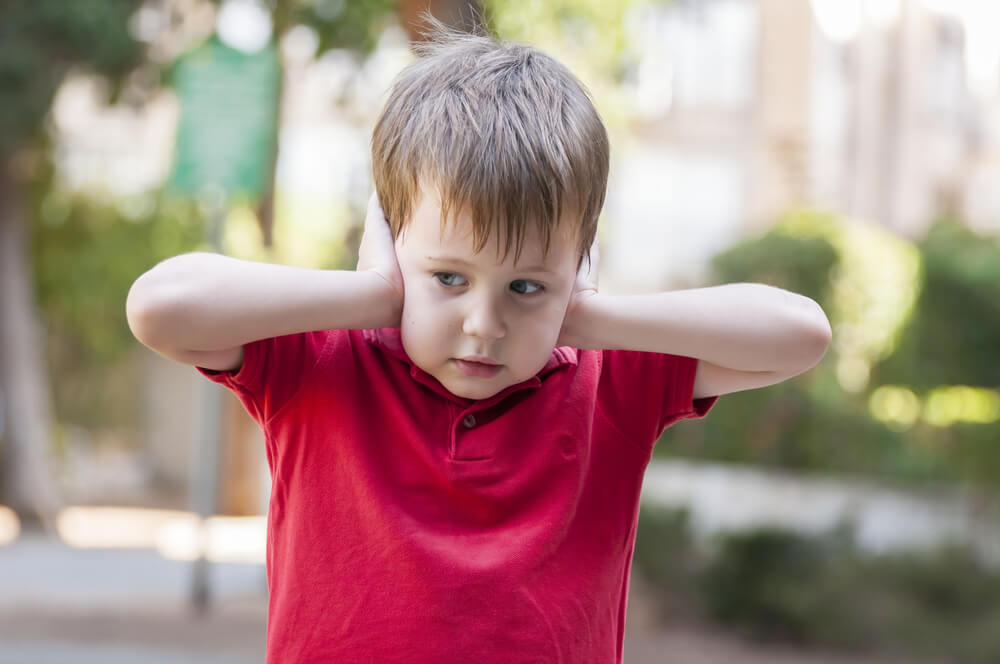
Roman Yanushevsky/Shutterstock.com
Because each child is different they will reach their respective milestones at their own pace. Mastering motor, cognitive, speech, and movement milestones should not be thought of as written in stone. While a milestone is helpful to parents, teachers, and medical staff, it is merely a guideline.
Several aspects can have an impact on your child’s ability or even willingness to participate in milestone measurements. These should never be taken as hard evidence of developmental delays. There are however certain warning signs which may indicate delays in reaching developmental milestones.
One of the biggest red flags that parents can look out for is any regression from skills that their 3-year-old was previously able to do months ago. Children who undergo developmental delays often fall or stumble frequently, sometimes incurring injuries. Parents should also look out for serious delays in development such as not being able to run at all as well as fatigue which can limit any participation in social activities.
If you think your child may have delays in their development you should seek the help of your pediatrician. As a professional your child’s pediatrician will be able to advise on a way forward and where possible facilitate the correct screenings for your child.
You may want to talk with your child’s pediatrician if you are concerned about or notice any of the following in your child:
- Frequently falling and having trouble negotiating stairs
- Struggling to keep their balance while standing on one leg
- Non-development of speech
- Unable to draw and straight line or cross and cannot use cutlery
- Cannot speak in sentences
- Does not understand 2–3 step instructions
- Cannot play pretend or fantasy roleplay and refuses to play with other children
- Lack of eye contact when talking to other children or adults
Encourage Every Little Bit of Progress

Ground Picture/Shutterstock.com
When children hit the magical age of 3 parents can proudly watch as their child grows and accumulates many of their development milestones. Communication is the key to raising a bright young child. During this time it is important to encourage every little bit of progress your child makes in their journey. Nurturing their skills and interests is actively building independent and confident children.
Most importantly, talk to your 3-year-old, read to them, encourage curiosity, and participate in fantasy play. Parents should coordinate playdates and actively encourage outdoor fun. Remember to always consult your child’s primary healthcare provider if you have any concerns regarding your child’s development.
Share this insightful article with your friends, family, and other parents of 3-year-olds. Drop a comment below with your own stories of developmental milestones or words of encouragement for other parents. Your experiences matter! Together, let’s inspire and uplift one another and celebrate the wonderful moments of childhood. Ready to be a part of this heartwarming journey? Click SHARE now.
FAQ
What is normal behavior for a 3-year-old?
Meltdowns, aggression, and tantrums are all very normal for your 3-year-old, so is lying. These behaviors mean that your child is learning. Yes, they are learning. They are learning about their independence and their boundaries. At the same time, this behavior shows that your child’s cognitive, emotional, and social development is happening.
What is a 3-year-old expected to do?
At this age, your child is using every opportunity to explore the world around them. Daughter or son should be walking around, be able to kick and throw a ball, and also be comfortable running. Your 3-year-old will be very active and will use every chance they have to build on their newly acquired skills.
What life stage is a 3-year-old?
At 3-year-old your child is now considered to be a preschooler. At this stage, you’ll be seeing your child hit four of their most important developmental milestones; physical, communication, emotional, and cognitive.
Is a 3-year-old still a toddler?
While there are no hard and fast rules for categorizing the life stages of a child, many consider children aged 1 to 3 to be toddlers and children aged 3 to 5 as pre-schoolers.
The picture on the front page: Irina Wilhauk/Shutterstock.com
Проверьте электронный ящик














